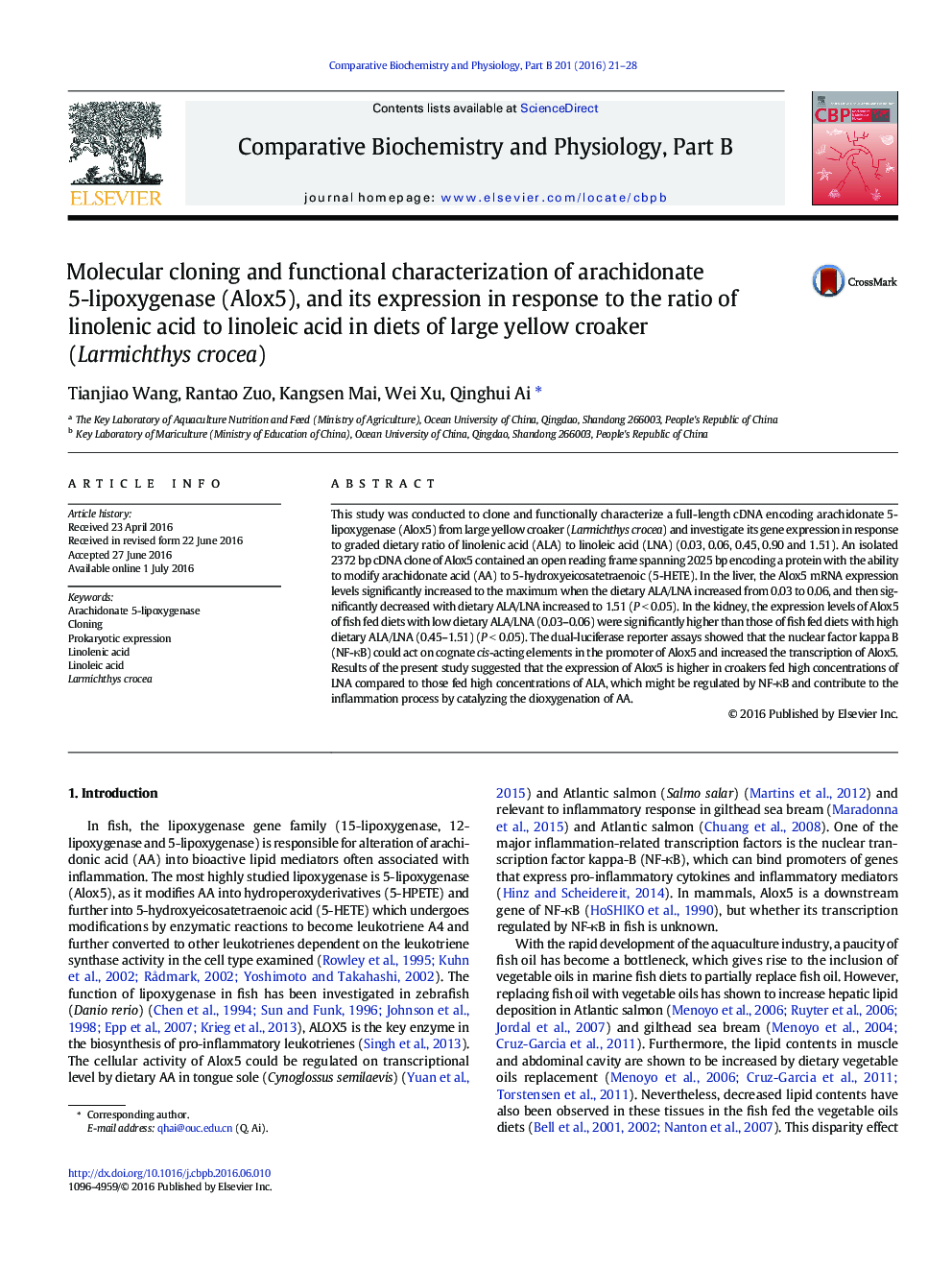| Article ID | Journal | Published Year | Pages | File Type |
|---|---|---|---|---|
| 1974981 | Comparative Biochemistry and Physiology Part B: Biochemistry and Molecular Biology | 2016 | 8 Pages |
Abstract
This study was conducted to clone and functionally characterize a full-length cDNA encoding arachidonate 5-lipoxygenase (Alox5) from large yellow croaker (Larmichthys crocea) and investigate its gene expression in response to graded dietary ratio of linolenic acid (ALA) to linoleic acid (LNA) (0.03, 0.06, 0.45, 0.90 and 1.51). An isolated 2372 bp cDNA clone of Alox5 contained an open reading frame spanning 2025 bp encoding a protein with the ability to modify arachidonate acid (AA) to 5-hydroxyeicosatetraenoic (5-HETE). In the liver, the Alox5 mRNA expression levels significantly increased to the maximum when the dietary ALA/LNA increased from 0.03 to 0.06, and then significantly decreased with dietary ALA/LNA increased to 1.51 (P < 0.05). In the kidney, the expression levels of Alox5 of fish fed diets with low dietary ALA/LNA (0.03-0.06) were significantly higher than those of fish fed diets with high dietary ALA/LNA (0.45-1.51) (P < 0.05). The dual-luciferase reporter assays showed that the nuclear factor kappa B (NF-κB) could act on cognate cis-acting elements in the promoter of Alox5 and increased the transcription of Alox5. Results of the present study suggested that the expression of Alox5 is higher in croakers fed high concentrations of LNA compared to those fed high concentrations of ALA, which might be regulated by NF-κB and contribute to the inflammation process by catalyzing the dioxygenation of AA.
Keywords
Related Topics
Life Sciences
Biochemistry, Genetics and Molecular Biology
Biochemistry
Authors
Tianjiao Wang, Rantao Zuo, Kangsen Mai, Wei Xu, Qinghui Ai,
